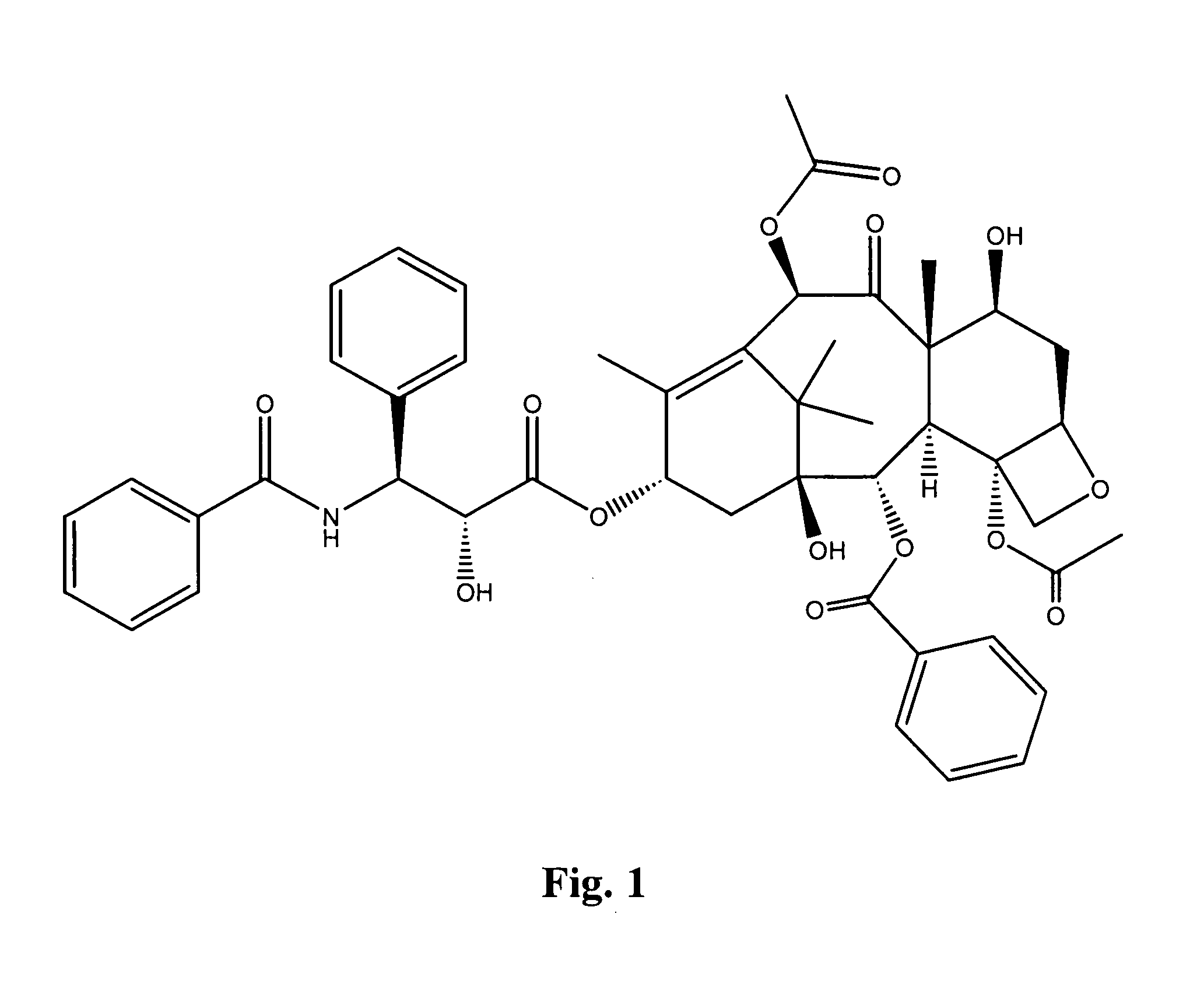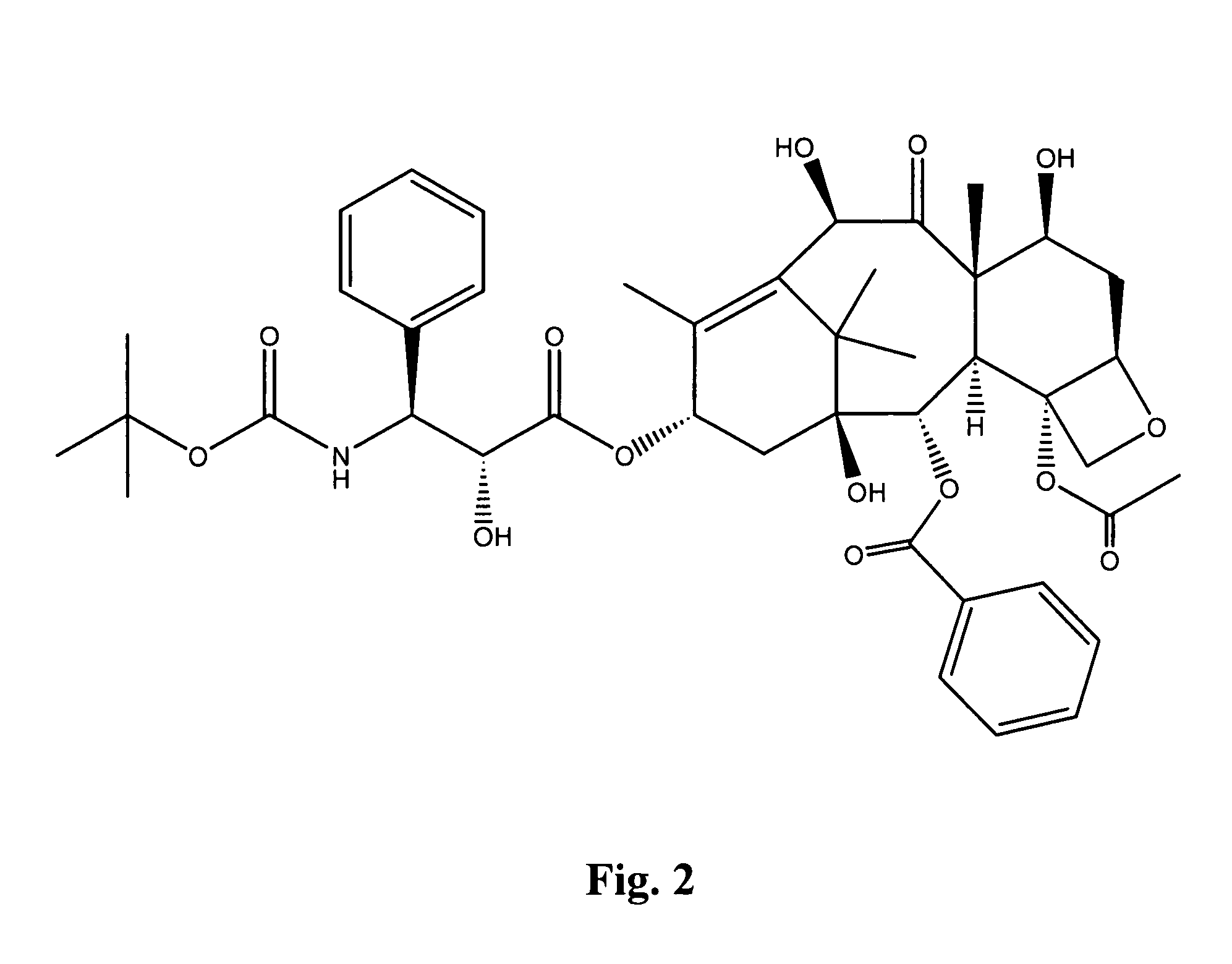Compounds for treating proliferative disorders
a proliferative disorder and compound technology, applied in the direction of biocide, amide active ingredients, drug compositions, etc., can solve the problems of cftr post-translational processing not proceeding correctly, glycoproteins not being delivered to the cell membrane, etc., and achieve the effect of being particularly effectiv
- Summary
- Abstract
- Description
- Claims
- Application Information
AI Technical Summary
Benefits of technology
Problems solved by technology
Method used
Image
Examples
example 1
Compound 1: 2-((dimethylamino)methylene)-N′1,N′3-dimethyl-N′1,N′3-di(phenylcarbonothioyl)malonohydrazide
[0291]
[0292]To a solution of B (1.0 mmol) in THF (5 ml), was added N,N-dimethylformamide dimethyl acetal (2.0 mmol). The reaction mixture was stirred at RT for 2 hr. Completion was judged by TLC. The reaction mixture was diluted with water (2 ml) and extracted with CH2Cl2 (2×10 ml) and the organic phase washed with water and brine, dried (Na2SO4), filtered, evaporated and purified by flash chromatography on a column of silica gel (2-5% MeOH in CH2Cl2) and to give Compound 1 (365 mg) in 80% yield.
[0293]ESMS clcd for C22H25N5O2S2: 455.14. Found: 456.2 (M+H)+.
[0294]Compound B can be prepared according to U.S. Pat. No. 6,800,660 and U.S. Pat. No. 6,825,235, which are incorporated by reference herein in their entirety.
[0295]To a solution of compound Compound 1 (1.0 mmol) in dioxane (10 ml), was added the amine (2.5 mmol). The reaction mixture was stirred at RT for 3-5 hr. Completion wa...
example 2
Compounds of the Invention Enhance the Anti-Cancer Activity of Anti-Cancer Agents In Vivo
[0307]A. General Procedure of In Vivo Anti-Tumor Study
[0308]The in vivo anti-cancer enhancing effect of novel compounds are assessed in tumor bearing mice using the tumor growth inhibition assay. Tumor cells are implanted by injection of a tumor cell suspension subcutaneously in the flank of a mouse. Treatment of the tumor with a compound of the invention and another anti-cancer agent (e.g., paclitaxel, which will be used hereinafter by way of example) is begun after the tumor had been established (volume was about 100 mm3). The animals are then started on a multiple injection schedule where the compound and paclitaxel are given by IV route of administration. Tumors are measured two times a week. During the course of this assay, animals are monitored daily for signs of toxicity including body weight loss.
[0309]B. Procedure
[0310]A supplemented media is prepared from 50% DMEM / Dulbecco Modified Eag...
examples 3-7
[0321]Heat shock proteins (Hsp) are induced under a variety of stress conditions and bind to other proteins to prevent their denaturation. Hsps can protect the cell from apoptotic death. Agents that induce the production of Hsp70 can have protective activity against a wide range of insults, and may have particular utility in neurological disorders. The neuroprotectant activity of Hsp70 inducing compounds of the invention can be assessed in a variety of animal neurological disease models. Specifically, animal models of stroke, amyotrophic lateral sclerosis, Huntington's disease, Parkinson's disease, and Alzheimer's disease are appropriate settings for testing efficacy. Some example animal models are provided below.
PUM
| Property | Measurement | Unit |
|---|---|---|
| surface area | aaaaa | aaaaa |
| surface area | aaaaa | aaaaa |
| surface area | aaaaa | aaaaa |
Abstract
Description
Claims
Application Information
 Login to View More
Login to View More - R&D
- Intellectual Property
- Life Sciences
- Materials
- Tech Scout
- Unparalleled Data Quality
- Higher Quality Content
- 60% Fewer Hallucinations
Browse by: Latest US Patents, China's latest patents, Technical Efficacy Thesaurus, Application Domain, Technology Topic, Popular Technical Reports.
© 2025 PatSnap. All rights reserved.Legal|Privacy policy|Modern Slavery Act Transparency Statement|Sitemap|About US| Contact US: help@patsnap.com



